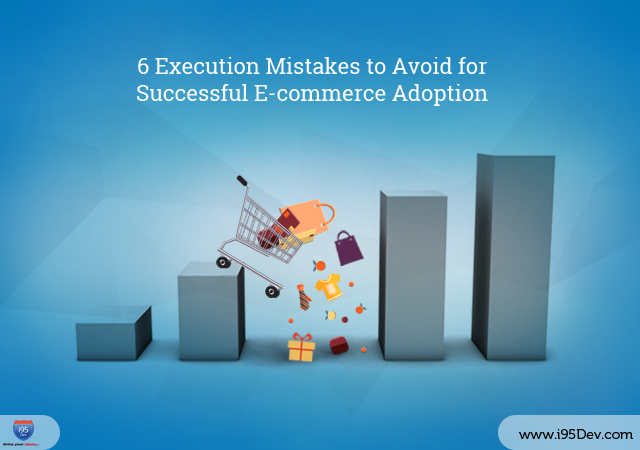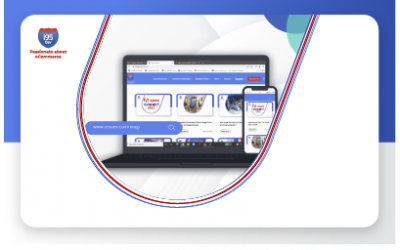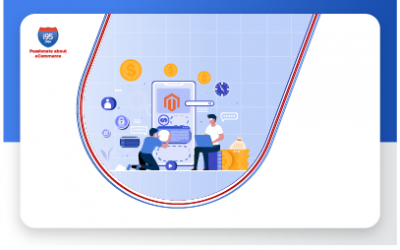This gem of a quote resonates across many spheres but is very apt in relation to the field of e-commerce. You may want to adopt e-commerce and even have an excellent strategy in place covering logistics, suppliers, marketing, IT and warehouse. However, your e-commerce might be a big failure and you might find your competition always ahead, courtesy bad execution.
In this article we will look at 6 execution mistakes you must avoid for e-commerce success. In Sue Grafton’s words, Ideas are easy. It’s the execution of ideas that really separates the sheep from the goats.
1) Starting with Unrealistic Timelines
There are no unrealistic goals, only unrealistic deadlines. – Brian Tracy
You cannot build a good e-commerce store overnight. It needs careful planning and execution. Give the e-commerce agency time to understand your business and its unique challenges. Starting with unrealistic timeless can be a huge dampener and can derail the entire project.
E-commerce is not just an additional sales channel and it has an organizational wide impact from marketing, sales, IT, operations, customer service, and management. Before setting up a timeline, work with the agency to understand the dependencies, the strength and weaknesses of your resources, and budgets to arrive at a realistic timeline.
Remember, in a hurry to meet the timelines, you and the agency might have to cut corners and compromise on things critical to the success of your e-commerce store.
2) Not Getting the Numbers Right (read Budget)
Beware of expenses; a small leak will sink a great ship. – Benjamin Franklin
According to a Forrester research, 43% of companies tend to underestimate the cost of their e-commerce platform. Moreover, this is not limited just to the implementation phase of e-commerce. While increased sophistication and customizations to create a unique customer experience can inflate budgets during the initial phases, operational inefficiency, bad inventory management, etc. can increase costs at a later stage.
Hence, it is important to identify the cost heads in advance and move forward with a realistic budget. During implementation prioritize your requirements and follow a phased approach spreading the costs. Subsequently, keep measuring efficiency and costs across hosting (Check out Nexcess), inventory management, fulfillment, shipping and more and identify ways to improve profitability.
3) Not Getting all Stakeholders on Board
All stakeholders should participate in the gains and losses of any particular situation. – Christine Lagarde
The phrase, “Gettng all the stakeholders on board”, has moved beyond the walls of a boardroom. This simple yet powerful phrase is an advice which if not followed can drag your e-commerce project graph down south.
Various departments contribute to the success of an e-commerce business; from IT, marketing, sales, accounting, supply chain management, operations, customer service to management. If these departments do not work together in cohesion, your customer experience and satisfaction can take a huge hit. Hence, it is important to involve (educate, seek feedback, etc.) all stakeholders who are impacted by the project from the very beginning.
While education helps in managing their expectations, seeking feedback makes them feel involved and reduces resistance. Many e-commerce companies fail in this aspect resulting in fractured communication, missed deadlines, and increased costs. So, involving the right stakeholders and getting them to agree to a plan can be the difference between a successful and broken e-commerce setup.”
4) Not Spending Time on Training Resources
The only thing worse than training your employees and having them leave is not training them and having them stay. – Henry Ford
For any business be it physical or online the word inappropriate growth is an anathema. Many e-commerce businesses invest well in procuring the best platform, providing the best infrastructure, and driving sales, but miss the point – are their resources equipped and trained to handle this?
Your resources are not only exposed to a new platform but also the increased activity and expectations that come along with it. They now have to manage more customers, fulfill more orders, and service more customers while effectively managing inventory and increased customer expectations.
If you do not train your resources to manage this effectively, poor customer experience and unhappy employees will be the new order of the day, which is bad for your business. Spend time to identify the training needs of your resources and train them to handle the different situations. Arm them with tools that will make the transition smooth and easy.
5) Ignore the Competition
Your competition is everything else your prospect could conceivably spend their money on. – Don Cooper
With increased commoditization of products and readily available tools (websites) to compare products, it is very easy for your customers to move to a competitor. In this scenario, not understanding and underestimating the competition is a cardinal sin of that any e-commerce business can commit.
No, we are not encouraging you to imitate your competition but it pays to be aware of your competitor’s strengths and have a strategy in place to counter that. Businesses often fail to do this and do not invest time in creating a differentiation for themselves; falling prey to the comparison game. Spend some time to understand your competitors’ value offering and their customer experience. Being aware of this will help you understand your competitors’ shortcomings and build a differentiation for your brand.
6) Not Monitoring and Taking Timely Actions (read Analytics)
The most reliable way to forecast the future is to understand the present. – John Naisbit
Analytics and Forecasting lie at the heart of any successful business. They help you understand what is working well for you and plan for a better future. While a lot has been said the role of the gut (or intuition) in decision-making, businesses will have to ignore data and analytics at their own peril.
An e-commerce store garners a large amount of data related to customers, orders, products and more that has potential to drive a lot more sales when leveraged effectively. Businesses, because of lack of awareness and understanding, often fail to capitalize on this gold mine of information they are sitting on. Invest in a good analytics tool that can convert this data into insights and help you take more informed decisions.
Vision without execution, is delusion. – Thomas Edison
This is our third article in Bad E-commerce Strategies series. We encourage you to read the other articles
- 6 Requirement Mistakes to Avoid for Successful E-commerce Adoption,
- 6 Usability Mistakes to Avoid for Successful E-commerce Adoption, and
- 4 Infrastructure and Support Mistakes to Avoid for Successful E-commerce Adoption
for more information.
Recent Blogs
B2B e-commerce – How Home Depot is leading the game
B2B eCommerce – How Home Depot is leading the game Author Category Share The home improvement industry has undergone a remarkable transformation, and at the heart of this change is the rise...
Accelerating Success: Best Practices for Automotive eCommerce
Accelerating Success: Best Practices for Automotive eCommerce Author Category Share In recent years, eCommerce has revolutionized the automotive sector, driving a notable surge in sales and...
Magento (Adobe Commerce) Pricing – Everything You Need To Know
Magento (Adobe Commerce) Pricing - Everything You Need To Know Author Category Share Adobe Commerce is a popular eCommerce platform used by many online stores to build and manage their...






